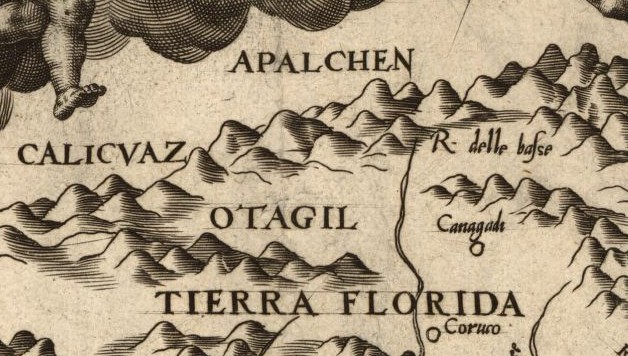|
Loop Subdivision Surface
In computer graphics, the Loop method for subdivision surfaces is an approximating subdivision scheme developed by Charles Loop in 1987 for triangular meshes. Prior methods, namely Catmull-Clark and Doo-Sabin (1978), focused on quad meshes. Loop subdivision surfaces are defined recursively, dividing each triangle into four smaller ones. The method is based on a quartic box spline. It generates C2 continuous limit surfaces everywhere except at extraordinary vertices, where they are C1 continuous. Applications Geologists have applied Loop subdivision surfaces to model erosion on mountain faces, specifically in the Appalachians. See also * Geodesic polyhedron A geodesic polyhedron is a convex polyhedron made from triangles. They usually have icosahedral symmetry, such that they have 6 triangles at a vertex, except 12 vertices which have 5 triangles. They are the dual of corresponding Goldberg po ... * Catmull-Clark subdivision surface * Doo-Sabin subdivision sur ... [...More Info...] [...Related Items...] OR: [Wikipedia] [Google] [Baidu] |
Loop Subdivision Icosahedron
Loop or LOOP may refer to: Brands and enterprises * Loop (mobile), a Bulgarian virtual network operator and co-founder of Loop Live * Loop, clothing, a company founded by Carlos Vasquez in the 1990s and worn by Digable Planets * Loop Mobile, an Indian mobile phone operator * Loop Internet, an internet service provider in Pennsylvania, United States * Loop, a reusable container program announced in 2019 by TerraCycle Geography * Loop, Germany, a municipality in Schleswig-Holstein * Loop (Texarkana), a roadway loop around Texarkana, Arkansas, United States * Loop, Blair County, Pennsylvania, United States * Loop, Indiana County, Pennsylvania, United States * Loop, West Virginia, United States * Loop 101, a semi-beltway of the Phoenix Metropolitan Area * Loop 202, a semi-beltway of the Phoenix Metropolitan Area * Loop 303, a semi-beltway of the Phoenix Metropolitan Area * Chicago Loop, the downtown neighborhood of Chicago bounded by the elevated railway The Loop ** Loop R ... [...More Info...] [...Related Items...] OR: [Wikipedia] [Google] [Baidu] |
Parametric Continuity
In mathematical analysis, the smoothness of a function is a property measured by the number of continuous derivatives (''differentiability class)'' it has over its domain. A function of class C^k is a function of smoothness at least ; that is, a function of class C^k is a function that has a th derivative that is continuous in its domain. A function of class C^\infty or C^\infty-function (pronounced C-infinity function) is an infinitely differentiable function, that is, a function that has derivatives of all orders (this implies that all these derivatives are continuous). Generally, the term smooth function refers to a C^-function. However, it may also mean "sufficiently differentiable" for the problem under consideration. Differentiability classes Differentiability class is a classification of functions according to the properties of their derivatives. It is a measure of the highest order of derivative that exists and is continuous for a function. Consider an ... [...More Info...] [...Related Items...] OR: [Wikipedia] [Google] [Baidu] |
Geodesic Polyhedron
A geodesic polyhedron is a convex polyhedron made from triangles. They usually have icosahedral symmetry, such that they have 6 triangles at a vertex, except 12 vertices which have 5 triangles. They are the dual of corresponding Goldberg polyhedra, of which all but the smallest one (which is a regular dodecahedron) have mostly hexagonal faces. Geodesic polyhedra are a good approximation to a sphere for many purposes, and appear in many different contexts. The most well-known may be the ''geodesic domes'', hemispherical architectural structures designed by Buckminster Fuller, which geodesic polyhedra are named after. Geodesic grids used in geodesy also have the geometry of geodesic polyhedra. The capsids of some viruses have the shape of geodesic polyhedra, and some pollen grains are based on geodesic polyhedra. Fullerene molecules have the shape of Goldberg polyhedra. Geodesic polyhedra are available as geometric primitives in the Blender 3D modeling software package, whic ... [...More Info...] [...Related Items...] OR: [Wikipedia] [Google] [Baidu] |
Appalachians
The Appalachian Mountains, often called the Appalachians, are a mountain range in eastern to northeastern North America. The term "Appalachian" refers to several different regions associated with the mountain range, and its surrounding terrain. The general definition used is one followed by the United States Geological Survey and the Geological Survey of Canada to describe the respective countries' physiographic regions. The U.S. uses the term Appalachian Highlands and Canada uses the term Appalachian Uplands; the Appalachian Mountains are not synonymous with the Appalachian Plateau, which is one of the provinces of the Appalachian Highlands. The Appalachian range runs from the Island of Newfoundland in Canada, southwestward to Central Alabama in the United States; south of Newfoundland, it crosses the 96-square-mile (248.6 km2) archipelago of Saint Pierre and Miquelon, an overseas collectivity of France, meaning it is technically in three countries. The highest pea ... [...More Info...] [...Related Items...] OR: [Wikipedia] [Google] [Baidu] |
Mountain Faces
A mountain is an elevated portion of the Earth's crust, generally with steep sides that show significant exposed bedrock. Although definitions vary, a mountain may differ from a plateau in having a limited summit area, and is usually higher than a hill, typically rising at least above the surrounding land. A few mountains are isolated summits, but most occur in mountain ranges. Mountains are formed through tectonic forces, erosion, or volcanism, which act on time scales of up to tens of millions of years. Once mountain building ceases, mountains are slowly leveled through the action of weathering, through Slump (geology), slumping and other forms of mass wasting, as well as through erosion by rivers and glaciers. High elevations on mountains produce Alpine climate, colder climates than at sea level at similar latitude. These colder climates strongly affect the Montane ecosystems, ecosystems of mountains: different elevations have different plants and animals. Because of t ... [...More Info...] [...Related Items...] OR: [Wikipedia] [Google] [Baidu] |
Erosion
Erosion is the action of surface processes (such as Surface runoff, water flow or wind) that removes soil, Rock (geology), rock, or dissolved material from one location on the Earth's crust#Crust, Earth's crust and then sediment transport, transports it to another location where it is deposit (geology), deposited. Erosion is distinct from weathering which involves no movement. Removal of rock or soil as clastic sediment is referred to as ''physical'' or ''mechanical'' erosion; this contrasts with ''chemical'' erosion, where soil or rock material is removed from an area by Solvation, dissolution. Eroded sediment or solutes may be transported just a few millimetres, or for thousands of kilometres. Agents of erosion include rainfall; bedrock wear in rivers; coastal erosion by the sea and Wind wave, waves; glacier, glacial Plucking (glaciation), plucking, Abrasion (geology), abrasion, and scour; areal flooding; Aeolian processes, wind abrasion; groundwater processes; and Mass wastin ... [...More Info...] [...Related Items...] OR: [Wikipedia] [Google] [Baidu] |
Geologists
A geologist is a scientist who studies the structure, composition, and history of Earth. Geologists incorporate techniques from physics, chemistry, biology, mathematics, and geography to perform research in the field and the laboratory. Geologists work in the energy and mining sectors to exploit natural resources. They monitor environmental hazards such as earthquakes, volcanoes, tsunamis and landslides. Geologists are also important contributors to climate change discussions. History James Hutton is often viewed as the first modern geologist. In 1785 he presented a paper entitled ''Theory of the Earth'' to the Royal Society of Edinburgh. In his paper, he explained his theory that the Earth must be much older than had previously been supposed to allow enough time for mountains to be eroded and for sediments to form new rocks at the bottom of the sea, which in turn were raised up to become dry land. Hutton published a two-volume version of his ideas in 1795Vol. 1 [...More Info...] [...Related Items...] OR: [Wikipedia] [Google] [Baidu] |
Box Spline
In the mathematical fields of numerical analysis and approximation theory, box splines are piecewise polynomial functions of several variables. Box splines are considered as a multivariate generalization of basis splines (B-splines) and are generally used for multivariate approximation/interpolation. Geometrically, a box spline is the shadow (X-ray) of a hypercube projected down to a lower-dimensional space. Box splines and simplex splines are well studied special cases of polyhedral splines which are defined as shadows of general polytopes. Definition A box spline is a multivariate function (\mathbb^d \to \mathbb) defined for a set of vectors, \xi \in \mathbb^d, usually gathered in a matrix \mathbf := \left xi_1 \dots \xi_N\right When the number of vectors is the same as the dimension of the domain (i.e., N = d ) then the box spline is simply the (normalized) indicator function of the parallelepiped formed by the vectors in \mathbf: : M_(\mathbf) := \frac\chi_(\mathbf) = \begin ... [...More Info...] [...Related Items...] OR: [Wikipedia] [Google] [Baidu] |
Computer Graphics
Computer graphics deals with generating images and art with the aid of computers. Computer graphics is a core technology in digital photography, film, video games, digital art, cell phone and computer displays, and many specialized applications. A great deal of specialized hardware and software has been developed, with the displays of most devices being driven by graphics hardware, computer graphics hardware. It is a vast and recently developed area of computer science. The phrase was coined in 1960 by computer graphics researchers Verne Hudson and William Fetter of Boeing. It is often abbreviated as CG, or typically in the context of film as Computer-generated imagery, computer generated imagery (CGI). The non-artistic aspects of computer graphics are the subject of Computer graphics (computer science), computer science research. Some topics in computer graphics include user interface design, Sprite (computer graphics), sprite graphics, raster graphics, Rendering (computer graph ... [...More Info...] [...Related Items...] OR: [Wikipedia] [Google] [Baidu] |
Quartic Function
In algebra, a quartic function is a function (mathematics), function of the form :f(x)=ax^4+bx^3+cx^2+dx+e, where ''a'' is nonzero, which is defined by a polynomial of Degree of a polynomial, degree four, called a quartic polynomial. A ''quartic equation'', or equation of the fourth degree, is an equation that equates a quartic polynomial to zero, of the form :ax^4+bx^3+cx^2+dx+e=0 , where . The derivative of a quartic function is a cubic function. Sometimes the term biquadratic is used instead of ''quartic'', but, usually, biquadratic function refers to a quadratic function of a square (or, equivalently, to the function defined by a quartic polynomial without terms of odd degree), having the form :f(x)=ax^4+cx^2+e. Since a quartic function is defined by a polynomial of even degree, it has the same infinite limit when the argument goes to positive or negative infinity. If ''a'' is positive, then the function increases to positive infinity at both ends; and thus the function ... [...More Info...] [...Related Items...] OR: [Wikipedia] [Google] [Baidu] |
Computer Representation Of Surfaces
In technical applications of 3D computer graphics ( CAx) such as computer-aided design and computer-aided manufacturing, surfaces are one way of representing objects. The other ways are wireframe (lines and curves) and solids. Point clouds are also sometimes used as temporary ways to represent an object, with the goal of using the points to create one or more of the three permanent representations. Open and closed surfaces If one considers a local parametrization of a surface: :\mathbf = \mathbf (u, v), then the curves obtained by varying ''u'' while keeping ''v'' fixed are coordinate lines, sometimes called the ''u'' ''flow lines''. The curves obtained by varying ''v'' while ''u'' is fixed are called the ''v'' flow lines. These are generalizations of the ''x'' and ''y'' Cartesian coordinate lines in the plane coordinate system and of the meridians and circles of latitude on a spherical coordinate system. Open surfaces are not closed in either direction. This means ... [...More Info...] [...Related Items...] OR: [Wikipedia] [Google] [Baidu] |







